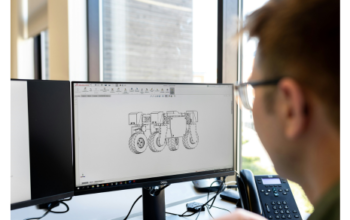What are robotics applications in everyday life? Robotics applications in everyday life include automation of household chores, medical assistance, manufacturing, entertainment, transportation, and personal assistance, all with the power of robots to bring efficiency and convenience.
How do robots assist in household chores? Robots such as robotic vacuum cleaners, floor moppers, and lawnmowers help by doing repetitive tasks such as cleaning, vacuuming, and mowing the lawn, saving time and effort for homeowners.
Can robots be used in healthcare? Yes, robots are used in healthcare for surgery assistance, rehabilitation, elderly care, and even disinfecting hospital rooms. Surgical robots provide precision, while robotic exoskeletons aid mobility and rehabilitation.
What role do robots play in manufacturing? Robots are widely used in manufacturing for assembly lines, welding, packaging, and quality control. They improve efficiency, precision, and safety by performing tasks that are repetitive or hazardous for humans.
How do robots help in transportation? Robots facilitate transportation through the use of self-driving cars, delivery drones, and traffic monitoring systems. There is development in driverless cars and delivery robots, which can facilitate safe and efficient transportation.
Is there a personal assistant robot? Yes, in the form of home service robots and AI-driven virtual assistants like Alexa and Siri, personal assistant robots can make scheduling and reminder tasks easy by performing simple activities around the house, hands-free.
How do robots contribute to the entertainment industry? Robots are used in entertainment through interactive experiences, animatronics in theme parks, robotic performers in live shows, and even AI-powered characters in video games, providing more immersive and engaging experiences.
The role of robots in education is helping with interactive learning, STEM education, and special needs support. Educational robots can help in teaching programming, robotics, and problem-solving skills and make learning more engaging and hands-on.
Can robots help with elderly care? Yes, robots help the elderly by offering companionship, assistance with mobility, medication reminders, and even monitoring their health. Robots like social companion robots and robotic caregiving devices can help improve quality of life and independence.
Robots are used in disaster recovery to carry out search and rescue, handling hazardous material, and inspection of infrastructure. Drones with sensors and other robotic equipment identify survivors and measure the damage that may be difficult to reach and dangerous.
Can robots help cook? Robotic chefs, from cooking assistants and automated kitchens to others, can be helpful in meal preparation. These can chop, stir, and cook food while advanced systems also create personalized recipes based on diet preferences.
Robots help in environmental monitoring. They are used for the measurement of the quality of air and water, tracking climate changes, and doing environment-related research. Drones and robots armed with sensors can collect information from places that may be inaccessible or dangerous and present it for analysis.
Robots, in agriculture, are used in planting, harvesting, weeding, and crop monitoring. There is an improved crop yield by the use of automated machinery as well as minimized waste and labour.
Robots can indeed be used for cleaning purposes because many of them are already in use as vacuum cleaners, window cleaners, and floor cleaners to clean homes, offices, and industries. This way, the hard labor is avoided, and a cleaner environment is ensured.
Are there security robots? Yes, security robots are used for surveillance, monitoring premises, detection of intruders, and patrolling. Security robots can be equipped with cameras, sensors, and AI, thus offering 24/7 security and alerting human operators to possible threats.
In retail and customer service, how do robots help? Robots are applied in retailing for inventory management, restocking shelves, and helping customers locate products. In customer service, robots can include self-checkout kiosks or robot attendants that cut down on wait times and reduce the amount of work that customers have to do.
What do robots do in the job markets? Robots contribute to productivity and efficiency in several industries but will also displace jobs in positions that require the same repetitive motions. However, they also introduce new opportunities for jobs in technologies, robot designs, and their maintenance.
Can robots be helpful in personal fitness? Absolutely. Robots include AI-powered fitness devices, smart exercise machines, and robotic personal trainers that guide people to work out, track progress, and present customized fitness plans.
The future of robotics in everyday life is the development of autonomous vehicles, advanced personal assistants, more efficient manufacturing robots, healthcare innovations, and robots for sustainable living, which would lead to more automation and convenience.
With technological advancement, robots are becoming cheaper to the average consumer. The least expensive household robots are the most basic types: robotic vacuums, lawnmowers, and personal assistants. Prices of these products keep falling as years go by.




